Yamaha FZ1 Fazer
Prices and Review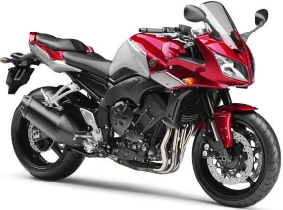
Apr-ilia, BMW, Bu-ell, Custom, Ducati, Harley-Davidson, Honda, Husqvarna, Kawasaki, Moto Guzzi, MZ, Suzuki, Triumph, Yamaha, New Motorcycles, Free Download Wallpaper and Many More
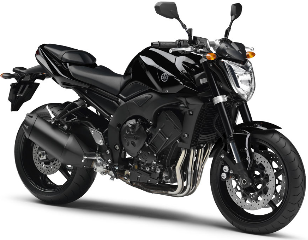
Design and Styling of Yamaha FZ1
Colours available in Yamaha FZ1 Naked:
Yamaha India has launched the FZ1 in two shades:
Press Release - Yamaha India Launched FZ1 & SZ-R in India
“While FZ1 is a naked sports bike with fuel-injected power and ‘Pure Torque’ for the ultimate riding experience, SZ-R gives the 150cc commuters segment a sporty edge apart from delivering Power, Comfort and Style. SZ series bikes launched in August 2010 and aggressive pricing of Rs 49,000/- have high demand and are gaining popularity across India. Customers have been demanding inclusion of the disc brake version which is now available in Yamaha SZ-R. We are confident that our new bike models will once again capture the hearts of our customers and will further consolidate our position in the market”, he added.
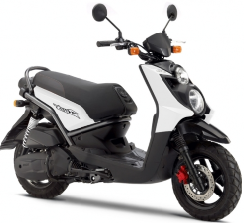
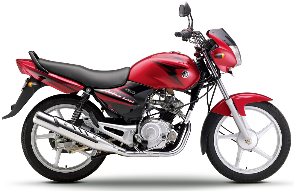
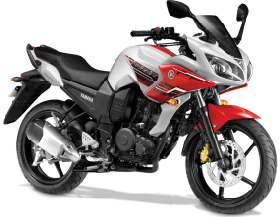
Update: Yamaha FZ Series Midnight Special Edition Launched
- Yamaha FZ16 Midnight Special
- Yamaha FZS Midnight Special
- Yamaha Fazer Midnight Special
Update II - Yamaha Fazer Gets New Side Panels
Design & Styling Of Yamaha Fazer
Price & Shades Of Yamaha Fazer
Yamaha Fazer has been launched in four shades:
 Ducati has finally pulled the wraps off its new heavily-redesigned Multistrada 1200 at the Milan EICMA show, and it’s fair to say to that the new bike is a far cry from its previous incarnation. Powered by a slightly modified version of the same liquid-cooled 1198cc V-twin Testastretta engine used in the company’s superbike lineup, the all-new Multistrada 1200 most interesting calling card is its advanced electronic engine (and in the case of the 1200 S model, suspension) control that transforms the new Ducati into four distinctly different motorcycling personalities.Utilizing four different engine modes— “Sport”, “Touring”, “Urban”, and “Enduro”— that can be changed on the fly at the touch of a button, the Multistrada is able to significantly alter its overall character via electronic adjustments to its fueling/ignition curve, ride-by-wire throttle, traction control, and with the Multistrada 1200S, even the suspension. For instance, while the Sport mode provides a full 150-horsepower output with a “sports-oriented suspension setup” and traction control set on level 3, the Touring mode offers the same peak power, but with a smoother torque delivery and traction control set on level 5 for a larger safety net, and the suspension settings dialed back to provide full comfort. Selecting the Urban mode instantly pulls back power to 100 horsepower, with the traction control set to level 7 to provide “high system intervention so the rider can enjoy enhanced safety even in the most chaotic of stop-start traffic”, with suspension set for “tackling the maze of city streets full of speed bumps and drain covers.” And unlike the previous Multistrada, should you venture off the paved path, a push of the button sets you into Enduro mode, where smooth 100-horsepower output, higher-set suspension, and traction control reduced to level 1 for almost no intervention (because spinning the tire is desired in this instance) allow you to traverse off-road sections in stride.There will be two different “equipment packages” offered with the S version of the Multistrada: a Sport edition with various carbon fiber components, and a Touring version with centerstand, heated grips, and specially-designed hard luggage. Both come standard with ABS.The standard Multistrada 1200 will be equipped with a fully adjustable 50mm Marzocchi inverted fork and likewise adjustable Sachs rear shock – ABS is available as an option. The S models are equipped with the electronically-adjustable Öhlins 48mm inverted fork and rear shock that were developed in conjunction with Ducati, allowing the changing of spring preload, rebound and compression damping adjustment to settings pre-set by Ducati, or an independent mode that allows owners to customize their own settings-- all via push-button access.The Testastretta engine is based on the 1198 superbike powerplant, but has been given the “Testastretta 11˚” moniker because of its somewhat unusual cam timing. Instead of the standard Testastretta that has 41 degrees of cam overlap (overlap is the amount of time the intake and exhaust valves are both open) in order to maximize volumetric efficiency by using the exhaust and intake pressure waves, the Multistrada’s engine has just 11 degrees. In conjunction with revised camshaft timing, redesigned ports and compression ratio, this not only produces a much smoother torque curve, but also provides benefits in emissions and fuel mileage as well. Intake is through two elongated snorkels protruding up front that feed both the airbox and the oil cooler. The 2-into-1-into-2 exhaust utilizes an under-engine chamber that handles both sound and emissions absorption, with two small outlets that provide plenty of room for the hard bags.
Ducati has finally pulled the wraps off its new heavily-redesigned Multistrada 1200 at the Milan EICMA show, and it’s fair to say to that the new bike is a far cry from its previous incarnation. Powered by a slightly modified version of the same liquid-cooled 1198cc V-twin Testastretta engine used in the company’s superbike lineup, the all-new Multistrada 1200 most interesting calling card is its advanced electronic engine (and in the case of the 1200 S model, suspension) control that transforms the new Ducati into four distinctly different motorcycling personalities.Utilizing four different engine modes— “Sport”, “Touring”, “Urban”, and “Enduro”— that can be changed on the fly at the touch of a button, the Multistrada is able to significantly alter its overall character via electronic adjustments to its fueling/ignition curve, ride-by-wire throttle, traction control, and with the Multistrada 1200S, even the suspension. For instance, while the Sport mode provides a full 150-horsepower output with a “sports-oriented suspension setup” and traction control set on level 3, the Touring mode offers the same peak power, but with a smoother torque delivery and traction control set on level 5 for a larger safety net, and the suspension settings dialed back to provide full comfort. Selecting the Urban mode instantly pulls back power to 100 horsepower, with the traction control set to level 7 to provide “high system intervention so the rider can enjoy enhanced safety even in the most chaotic of stop-start traffic”, with suspension set for “tackling the maze of city streets full of speed bumps and drain covers.” And unlike the previous Multistrada, should you venture off the paved path, a push of the button sets you into Enduro mode, where smooth 100-horsepower output, higher-set suspension, and traction control reduced to level 1 for almost no intervention (because spinning the tire is desired in this instance) allow you to traverse off-road sections in stride.There will be two different “equipment packages” offered with the S version of the Multistrada: a Sport edition with various carbon fiber components, and a Touring version with centerstand, heated grips, and specially-designed hard luggage. Both come standard with ABS.The standard Multistrada 1200 will be equipped with a fully adjustable 50mm Marzocchi inverted fork and likewise adjustable Sachs rear shock – ABS is available as an option. The S models are equipped with the electronically-adjustable Öhlins 48mm inverted fork and rear shock that were developed in conjunction with Ducati, allowing the changing of spring preload, rebound and compression damping adjustment to settings pre-set by Ducati, or an independent mode that allows owners to customize their own settings-- all via push-button access.The Testastretta engine is based on the 1198 superbike powerplant, but has been given the “Testastretta 11˚” moniker because of its somewhat unusual cam timing. Instead of the standard Testastretta that has 41 degrees of cam overlap (overlap is the amount of time the intake and exhaust valves are both open) in order to maximize volumetric efficiency by using the exhaust and intake pressure waves, the Multistrada’s engine has just 11 degrees. In conjunction with revised camshaft timing, redesigned ports and compression ratio, this not only produces a much smoother torque curve, but also provides benefits in emissions and fuel mileage as well. Intake is through two elongated snorkels protruding up front that feed both the airbox and the oil cooler. The 2-into-1-into-2 exhaust utilizes an under-engine chamber that handles both sound and emissions absorption, with two small outlets that provide plenty of room for the hard bags. The Kawasaki ZX-9R was a sport bike manufactured by the motorcycle division of Kawasaki Heavy Industries of Japan from 1994 to 2003. There were five model incarnations across two basic designs. Throughout its production run, it was both maligned and praised for its road-riding bias, which allowed for more rider comfort but less of a racebike-on-the-road experience of more single-minded competing designs.The ZX-9R debuted in 1994. Kawasaki developed the model in response to Honda's introduction of the CBR900RR FireBlade for the 1992 model year.
The Kawasaki ZX-9R was a sport bike manufactured by the motorcycle division of Kawasaki Heavy Industries of Japan from 1994 to 2003. There were five model incarnations across two basic designs. Throughout its production run, it was both maligned and praised for its road-riding bias, which allowed for more rider comfort but less of a racebike-on-the-road experience of more single-minded competing designs.The ZX-9R debuted in 1994. Kawasaki developed the model in response to Honda's introduction of the CBR900RR FireBlade for the 1992 model year. Super sport bikes (also known as middleweight sport bikes) are designed for optimal performance on a race track. They are generally built around a high revving, small displacement powerplant that is usually sized around 600 cc (36.6 cu in) to 800 cc (48.8 cu in). Most super sport bikes will carry a wet weight between 375 lb (170 kg) to 450 lb (204 kg) and produce around 110 bhp (82 kW). Because of how strongly focused super sport bikes are on race track performance, riders below 5 ft 3 in (1.6 m) in height will generally not be able to flatfoot (the placement of both feet completely flat on the ground while sitting on a motorcycle) these types of sport bikes. Taller and heavier riders may find the rider ergonomics in the default position to be cramped and uncomfortable.
Super sport bikes (also known as middleweight sport bikes) are designed for optimal performance on a race track. They are generally built around a high revving, small displacement powerplant that is usually sized around 600 cc (36.6 cu in) to 800 cc (48.8 cu in). Most super sport bikes will carry a wet weight between 375 lb (170 kg) to 450 lb (204 kg) and produce around 110 bhp (82 kW). Because of how strongly focused super sport bikes are on race track performance, riders below 5 ft 3 in (1.6 m) in height will generally not be able to flatfoot (the placement of both feet completely flat on the ground while sitting on a motorcycle) these types of sport bikes. Taller and heavier riders may find the rider ergonomics in the default position to be cramped and uncomfortable.
 2011 Triumph America Front View
2011 Triumph America Front View 2011 Triumph America Action
2011 Triumph America Action 2011 Triumph America Classic Touring
2011 Triumph America Classic Touring 2011 Triumph America Pictures
2011 Triumph America Pictures 2011 Triumph America Side View
2011 Triumph America Side View 2011 Triumph America Photos
2011 Triumph America Photos 2011 Triumph America Motorcycle
2011 Triumph America Motorcycle 2011 Triumph America Rear View
2011 Triumph America Rear View
 2011 Honda CB1000R Front View
2011 Honda CB1000R Front View 2011 Honda CB1000R Pictures
2011 Honda CB1000R Pictures 2011 Honda CB1000R Photos
2011 Honda CB1000R Photos 2011 Honda CB1000R Black Series
2011 Honda CB1000R Black Series 2011 Honda CB1000R Side View
2011 Honda CB1000R Side View 2011 Honda CB1000R Images
2011 Honda CB1000R Images 2011 Honda CB1000R Tricolour
2011 Honda CB1000R Tricolour 2011 Honda CB1000R Sportbike
2011 Honda CB1000R Sportbike 2011 Honda CB1000R Rear View
2011 Honda CB1000R Rear View 2011 Honda CB1000R Hot Babe
2011 Honda CB1000R Hot Babe 2011 Honda CB1000R White Color
2011 Honda CB1000R White Color